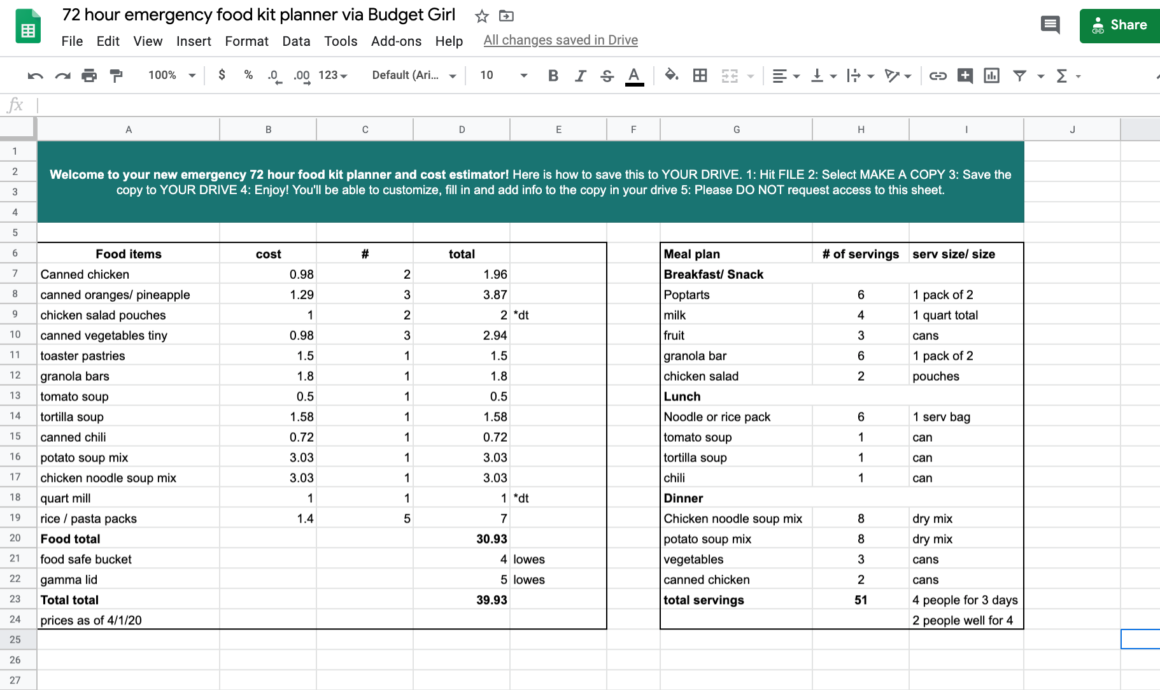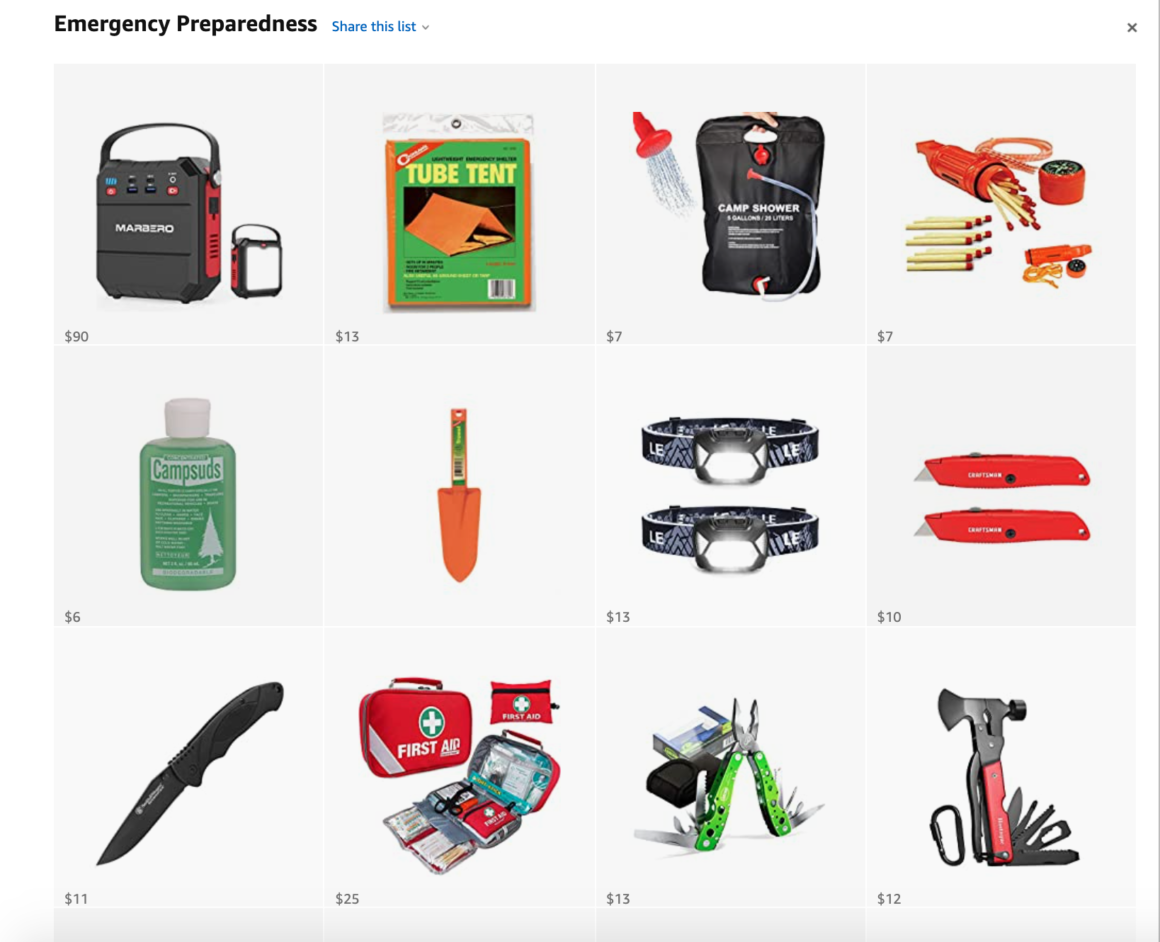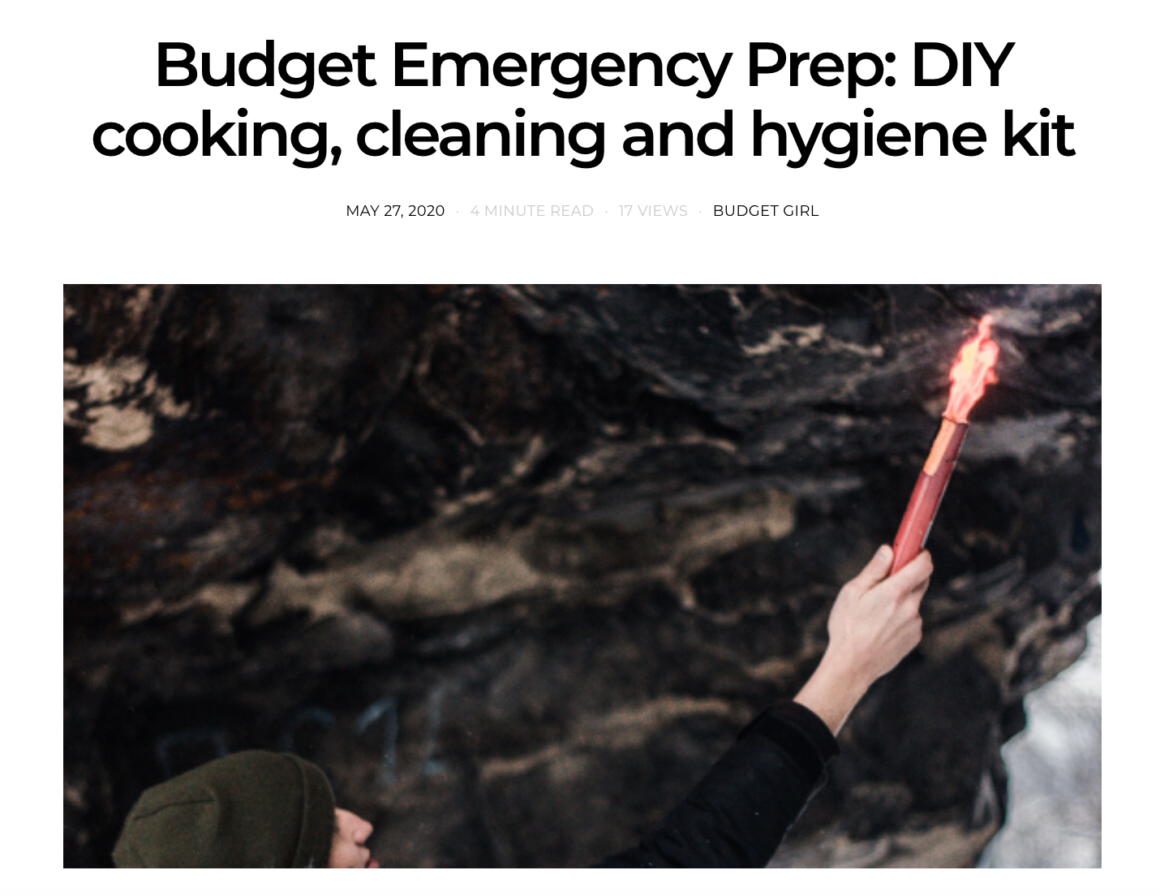I used to be a low-key prepper. I was a senior in high school on the Mississippi Gulf Coast when Hurricane Katrina hit. I had to evacuate for a whole semester and left without any needed documents, very few clothes and not much that I needed.
Why I prep and you should, BEFORE the next emergency
I then moved to an area that was in a tornado bowl, then another area that got hurricanes, then another tornado bowl… and then finally to College Station, Texas where no regular natural disasters occur. (phew, what a journey there.)
When I was on the Louisiana coast, I covered several hurricanes that affected my city. I was a reporter at the time and if a flood, hurricane, snowstorm, etc. happened — well I had to go to the affected areas during and after the weather to take pictures and report. This was dangerous and kept me very in the loop as far as damage and impact of these events. Several times we lost power, roads flooded, we were trapped places temporarily, etc.
The same was the case when I lived in Arkansas at the base of a mountain where tornados threatened the area regularly. Lost power… basement shelter in place, etc.
During these years, I was pretty poor and didn’t have a lot of options, so I kept a decent store of canned food, flashlights, and supplies so I could be prepared in the case of these real threats. I had to use them several times.
But I got lazy when I moved to Texas. I disassembled my “bug out bag” and donated/ moved my secondary ways to cook food and other supplies to my car emergency kit or to my camping stuff.
I also drove a real beater until recently so the car emergency kit was often and well used. 🙂
Enter the current pandemic.
My pantry has some food, but I hadn’t shopped in a couple weeks when things got serious in the United States. I certainly didn’t have any masks, or know where my emergency stuff was.
So I decided to get re-prepared.
The first step: 72 hour food kit.
Why? Well first because FEMA and Ready.gov recommend every home keep a 3 day supply of non-perishable food in every home. This is in case you get locked down or have to shelter in place, but could also be used in the case of an emergency where you have to evacuate your home in the case of an earthquake, forest fires, etc.

Because I’ve lived a situation where I’ve had to evacuate in an emergency and brought no food only to find the grocery store shelves being cleared because of the same emergency (sound familiar?) I think one of the easiest ways to store this food is in a 5 gallon bucket.

You can grab a food safe or just normal Home Depot or Lowes Bucket with a lid. These cost $5-10.
They’re portable, easy to stack if you have other emergency supplies (and you should, I’ll be doing a post on those later) and help keep critters and bugs from getting at your food.
NEXT, you need to decide what type of food you want to store. A few things to consider and some recommendations:
DON’T
- buy emergency ration bars, they’re gross and while better than nothing, no one is going to enjoy them.
- buy the long-term MRE’s or camping food – these things are overpriced, not delicious and you won’t enjoy them
- buy food your family won’t eat. Don’t store tuna if no one likes tuna. That’s silly. 🙂
DO
- buy food your family already eats. Love mac and cheese? Prep that!
- make a “meal plan” for the 72 hours so you don’t have to plan in the middle of a crisis. Plan for breakfast, lunch, dinner and snacks
- Put a variety of foods in. Pack some foods that can be eaten with no prep, just heated up, and cooked with water .
- Pack “comfort” food. Savory, yummy meals that would help in the case of a crisis situation.
- pay attention to expiration dates. Many grocery store canned goods and some dry goods have dates upwards of a year out. I’ll be rotating the items in my bucket into my pantry each January, so I made sure nothing expires until March 2021.
I bought my bucket and all my food April of 2020. Here are the prices I paid (in the middle of a pandemic with little options on the store shelves. If you look for sales and shop strategically, you could likely pack your bucket for as little as $20.

All of the items (except those marked *dt) came from HEB or Walmart. DT denotes Dollar Tree. I also added a $1 can opener for the canned goods without tab openings.
Here is my meal plan for 72 hours for Jacob and myself.

After creating this, I found the noodle and rice packs will easily feed two people so this could be stretched to 12 meals easily, or an extra day.



ALSO, there was plenty of room left in the bucket after all of this was packed (see video below) – I think this could easily work for a up to a week of food for a couple or small family.
This homemade emergency food kit is inexpensive, customized exactly to your family’s needs and taste preferences and can be created RIGHT NOW and make it so you’re just a little more prepared going forward.
Plan out your 72 hour emergency meal plan and cost estimate here:

See the full video here:
Let’s chat!
What will you put in your emergency kit?
See Part 2 of this series here! We’re covering cooking, cleaning and hygiene!
Need some help picking out emergency prep supplies? Check out my curated list for nearly any emergency here.

What area of preparedness do you want me to cover next?





3 comments
Interesting post. I really like the tip about making a 72-hour meal plan. I’d say, though, that it times of crisis it’s not always easy to just stick up on things you like. Sometimes all that you’ll have is those cans of tuna and it’s better than going hungry.
Hi Priya! I totally agree that any food is better than no food. If you’ll eat tuna, go for it! But I also like to prep with hope that I won’t need the items and can easily incorporate the food back into my pantry. Thanks so much for reading!
Great ideas!!! I will be modeling mine from your suggestions. For me, I am going to add some dehydrated onion flakes to give things a little more of a familiar flavor.
If you plan on updating your car kit please add it to your videos… I got some good ideas from your last one and added a few things to the one I had.
As always, good information and well researched.
Thanks for sharing!